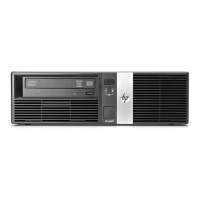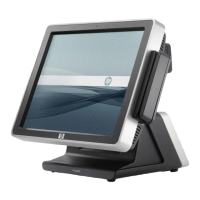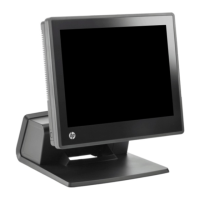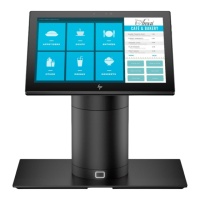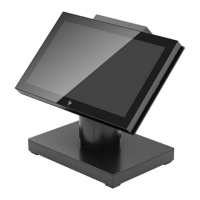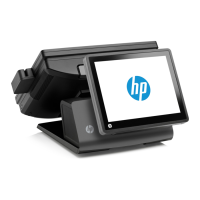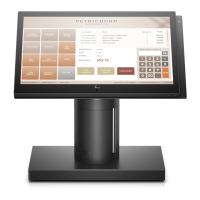I
inlmi'
'-----
________
K_eY_b_oa_rd_C_o_nt_ro_I----I.1
III I
INTRODUCTION
The
HP
2624A keyboard
is
a
separate
unit
that
is
linked
to
the
display
portion
of
the
terminal
by
a flexible cable.
Included
within
the
keyboard
unit
is a
speaker
that
is
used
for sounding
the
terminal's
bell
tone. Except for two keys
(_
and
_),
the
overall keyboard
can
be logically
divided
into
the
following five functional groups:
•
Character
Set
Group.
The
layout
of
these
keys
is
similar
to a
standard
typewriter
keyboard.
In
addition
to
the
alphanumeric
character
keys,
this
group includes
typical
data
terminal
keys
such
as
mil
and
III
.
•
Numeric
Pad
Group.
This
group is a calculator-type
numeric
key
pad
and
is
located to
the
right
of
the
char-
acter
set
keys.
You
may
use
this
pad
for
entering
large
amounts
of
numeric
data
such
as
that
required
for finan-
cial reporting.
•
Cursor
Control
Group.
This
group
is
used for moving
the
cursor
around
(up, down, left,
right,
tab,
and
back
tab)
on
the
screen
and
for controlling
what
portion of
display
memory
appears
on
the
screen (home, roll up, roll
down, previous page,
and
next
page).
•
Edit
Control
Group.
This
group
is
used for
inserting
and
deleting
characters
in
relation
to
the
current
cursor
position
(insert
character, delete character,
insert
line,
delete line, clear line,
and
clear
display).
•
Function
Key
Group.
This
group includes
the
eight
keys labeled
"f
1 "
through
"fa"
and
the
keys labeled
"AIDS",
"MODES"
and
"USER KEYS".
The
.-_
keys
are
multipurpose
keys
in
that
the
functions
they
perform
vary
from one
situation
to another.
At
any
given
time
the
applicable labels for
the
function keys
are
displayed
across
the
bottom of
the
screen (figure 3-1).
SELECTING MODES
Pressing
the
II
key
enables
the
mode selection keys
and
changes
the
•
-_
screen labels to
the
following:
............
-
LINE
MODIFY BLOCK
REMOTE
TERM
MEMORY
DISPLAY
AUTO
MODIFY
ALL
MODE MODE
TEST
LOCK FUNCTNS
LF
Except for
the
"TERMI
HAL
TEST"
key
(which
initiates
the
terminal
self-test),
these
keys
act
as
toggle switches
in
that
they
alternately
enable
and
disable
the
designated mode.
When
a
particular
mode is enabled,
an
asterisk
appears
in
the
associated key label.
Figure
3-1. Screen-Labeled
Function
Keys
Remote/Local Modes
When a communications
link
exists between
the
terminal
and
a remote host computer
the
terminal
is
in
either
of
the
following two modes:
•
Remote
Mode.
In
this
mode,
when
you press
an
al-
phanumeric
key
the
associated ASCII code is
trans-
mitted
to
the
host computer.
•
Local
Mode.
In
this
mode,
~hen
you
press
an
al-
phanumeric
key
the
associated
character
is displayed
at
the
current
cursor position
on
the
screen (nothing is
transmitted
to
the
host computer).
From
the
keyboard, you switch
the
terminal
back
and
forth
between
local
and
remote modes
using
the
"REMOTE MODE"
(,,)key.
From
a user-definable key you
can
switch
the
terminal
from local to remote (and vice versa)
using
the
following
escape sequences:
Local:
<ESC>&kOR
Remote: <ESC>&k1 R
A remote/local mode
designator
is
maintained
in
non-
volatile
memory.
When
you
change
modes
using
the
"REMOTE MODE" key, you also
alter
that
mode designator
in
non-volatile memory. When you change modes using
the
escape sequences, however,
the
designator is NOT altered.
3-1
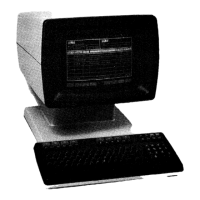
